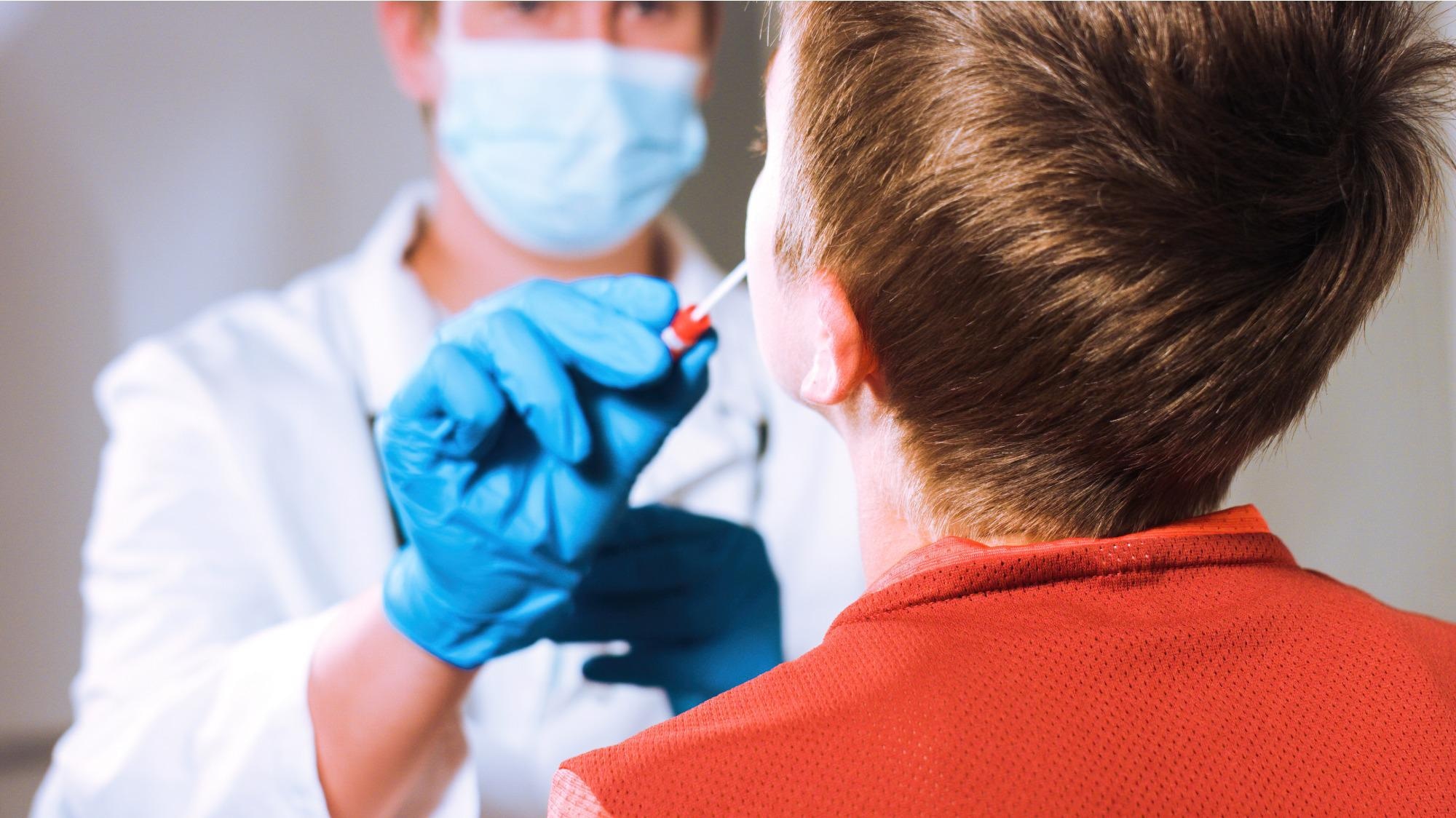Surveillance remains a critical strategy for reducing the impacts of coronavirus disease 2019 (COVID-19) while the transmission of severe acute respiratory syndrome coronavirus 2 (SAR-CoV-2) continues, vaccination efforts are ongoing, and communities reopen.

As children under the age of five are currently ineligible for vaccines available in the United States, SARS-CoV-2 screening is a critical control strategy, with continuous research into the feasibility and efficiency of screening procedures proving to be a vital element.
Background
Monitoring SARS-CoV-2 infections through saliva samples in children is a more feasible approach to testing because of the reduced invasiveness of this method compared to the current standard. SalivaDirect received Emergency Use Authorization from the US Food and Drug Administration in August 2020, demonstrating increased sensitivity to SARS-CoV-2 than nasopharyngeal screening, as well as a lower incidence of false-positive and invalid data. This easy, effective, and non-invasive testing procedure is a viable replacement for techniques that need costly additives and cooling processes, making it appropriate for large-scale testing.
The focus of this recent study posted to the preprint server medRxiv* was to implement a weekly saliva testing schedule in childcare centers. The goals were to prevent outbreaks in childcare centers and nursery schools, offer relevant public health data, and assist communities in gradually returning to normal operations and ways of life by detecting cases.
What did they do?
The authors recruited children aged 6 weeks to 7 years old as well as workers from seven childcare facilities. The research team explained the study's aim, goals, and design, and staff and parents/guardians were allowed to express their concerns and provide comments. The timing of saliva collection, as well as the teaching/observation approach for collection and the notification and timing of test findings, were discussed.
The study design was changed iteratively, considering both staff and parent comments. Consent forms were sent via email and physical copies were available at the selected childcare facilities for parents/guardians and employees to pick up whenever they wanted. A virtual conference was organized for each prospective participant to review and sign the consent agreement, provide basic demographic information, and conduct the initial saliva collection with a study team member once they received written consent.
Saliva collection tubes, disposable plastic bulb transfer pipettes, tube labels, and biohazard bags were distributed weekly to participants. Participants could pick up these materials in dedicated coolers outside of school at the drop-off site each week. The first saliva samples were taken virtually, with study staff assisting the participants. Participants were given 0.5-1 mL of saliva in conical collecting tubes authorized by the testing institution. Participants took samples at home in the evenings, chilled them overnight, and dropped them off in a designated cooler outside of each facility the next day.
Findings
As the investigation progressed, the number of inconclusive samples decreased significantly. Inquiries with the laboratory staff found that the primary causes of inconclusive samples were a lack of volume or leaks from the samples. The study materials were changed to make tube closing easier, and participants received emails reminding them of the minimum saliva amount required and to ensure the tube lids were sufficiently tightened. Participants' capacity to adjust to these directions confirms the practicality of collecting saliva samples at home.
Despite some early difficulties, at-home saliva collection in young children is a less invasive option than nasal/nasopharyngeal swabs, especially when accompanied by written instructions for parents/guardians. The completion of the collection by parents/guardians and their children reduces the requirement for interaction with healthcare workers, lowering the danger of nosocomial infection and eliminating a primary cause of testing bottlenecks. It also eliminates the requirement for supplies like nasal swabs and personal protective equipment.
Multiple analytic modeling studies have stressed the public health benefit of regular asymptomatic SARS-CoV-2 testing. According to models, sporadic testing is more likely to result in overlooked positive tests or first-time positive tests among those who have previously completed their infectious phase. Weekly testing was enough to effectively reduce infection increases in models, whereas less frequent testing, or no testing, was ineffective. These models also strongly favored prompt results reporting. Weekly monitoring and reporting of test results the following day were applied in this study based on the information offered in these models.
Implications
Weekly monitoring of SARS-CoV-2 infections in children and childcare center staff may help to prevent outbreaks and keep facilities operational longer. The authors used SalivaDirect RT-PCR to do weekly monitoring in this study. Saliva testing at home is a quick and painless replacement for nasopharyngeal swabs and is ideal for regular testing outside of a hospital setting.
The authors were able to easily establish regular saliva-based testing for SARS-CoV-2 in this setting by collaborating with childcare centers and parents/guardians. As new variants arise and community rates vary, weekly SalivaDirect testing in childcare centers will continue to be advantageous.
*Important notice
medRxiv publishes preliminary scientific reports that are not peer-reviewed and, therefore, should not be regarded as conclusive, guide clinical practice/health-related behavior, or treated as established information.
Posted in: Medical Science News | Medical Research News | Disease/Infection News
Tags: Children, Coronavirus, Coronavirus Disease COVID-19, covid-19, Food, Healthcare, Hospital, Laboratory, Nasopharyngeal, Personal Protective Equipment, Public Health, Research, Respiratory, SARS, SARS-CoV-2, Severe Acute Respiratory, Severe Acute Respiratory Syndrome, Syndrome
.jpg)
Written by
Colin Lightfoot
Colin graduated from the University of Chester with a B.Sc. in Biomedical Science in 2020. Since completing his undergraduate degree, he worked for NHS England as an Associate Practitioner, responsible for testing inpatients for COVID-19 on admission.
Source: Read Full Article